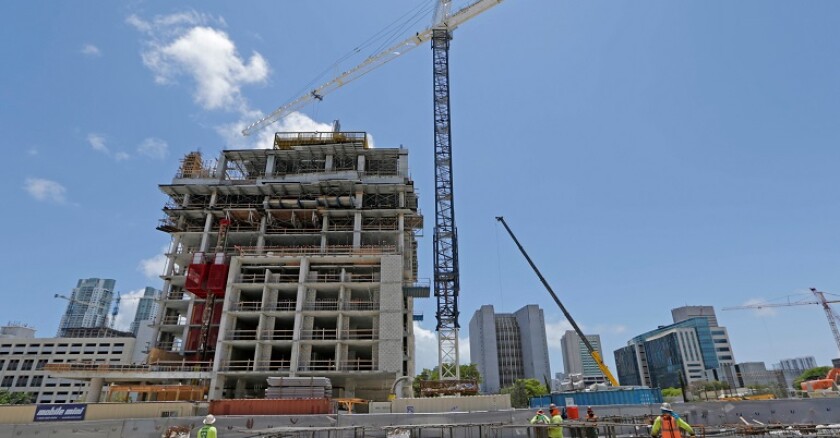The reality is that developers put up nearly all of the buildings around us, residential as well as commercial. For the most part, those leafy, family-friendly single-family-home neighborhoods said to be threatened by "greedy developers" were in fact built by developers. As advisers who work mostly with cities and local economic-development organizations, this is a growing concern to us: Unfairly demonizing these city-builders at a time when our urban areas are in need of so much rebuilding is against the public interest. Public agencies and officials, activist groups, and the media should take a step back and consider the important work developers do and find ways to collaborate with them.
Just like America's roads and bridges, its building infrastructure is in dire need of investment: From 2000 to 2015, 23 states with housing shortfalls produced 7.3 million fewer housing units than they needed to keep up with demand. Not only are developers the entities that are building desperately needed housing, they're also revitalizing downtowns and run-down, economically challenged communities across the country. From Lynchburg, Va., to Newark, N.J., to Vancouver, Wash., developers are bringing long-neglected neighborhoods back to life and in the process providing new economic and cultural opportunities to local residents.
Thinking of buildings as essential pieces of urban infrastructure sheds new light on their importance. Not only are they the places where we eat, sleep and work, but they also play host the "third places" -- cafés, bars, performance venues -- where we socialize and build community. And once constructed, buildings take on ever-shifting identities: video-rental stores are replaced by coffee shops; new high-end apartment buildings can make existing housing become more affordable over time; old industrial warehouses are converted into offices; grocery stores become churches. Buildings create a sense of urban identity, shaping our mental image of a place, from historic downtown cores of smaller towns to the iconic skyscrapers of major cities.
Constructing high-quality buildings that benefit cities and regions requires a careful regulatory balance that neither provides developers with a blank check nor prevents them from adequately addressing demand. Unfortunately, smaller communities often lack the staff or the political will to enforce high standards of design and construction, resulting in the creation of sub-standard environments and shoddy buildings that will only be torn down and rebuilt. This unregulated development costs the larger community in the end and precludes the ability to create a foundation of good building stock that can be reused by future generations. It is important for jurisdictions to consistently uphold strong construction requirements and remember that these projects, built properly, will remain for decades.
At the opposite end of the spectrum are the large municipalities that are imposing significant and complicated regulations that make the development process extremely difficult for anyone except sophisticated professionals with access to global financing. Additionally, downtown cores, which tend to be the most expensive part of a major city, are often the only places where development is allowed. In turn, this type of developer is focused on higher-end products to offset the high costs of building in complex areas. These regulations effectively prevent local developers from building entry- and middle-income housing.
Developers need to do their part too. They must acknowledge and counteract the historic trends that have given the industry a bad name, including the racist legacies of redlining and urban renewal. Concerns about displacement from gentrification and housing affordability in lower-income neighborhoods must also be taken into account and mitigated throughout the development process. Developers need to show that development can be a tool to fight displacement from gentrification, improve housing affordability and create more inclusive urban spaces. It's by now very clear that the cities that put up barriers to development, especially new housing construction, tend to be the least inclusive and affordable. Instead of making development virtually impossible, cities and activists should be asking developers, "How can we work together?"
These kinds of arrangements vary significantly in different contexts. In super-expensive markets such as the San Francisco Bay Area, for example, pairing new office construction or market-rate housing construction with below-market-rate housing is becoming standard, whether through inclusionary zoning regulations or simply from developers peremptorily seeking goodwill from the community. In anticipation of building a new campus in San Jose, Calif., for example, Google pledged to partner with developers to build 20,000 units of area housing, 5,000 of which will be affordable. If Amazon had made a similar pledge for its ill-fated HQ2 in New York City, the company's reception by local residents and city officials surely would have been much more favorable, providing the city the opportunity to catalyze a growing tech center in Queens.
In less-expensive suburban areas, developers can help create a greater sense of community and place. The massive Avalon development in Alpharetta, Ga., essentially created a new downtown for the suburban community near Atlanta, with a mixed-use town square complete with apartments, a hotel and ground-floor retail all in walking distance of new single-family homes. The developer puts on about 200 events a year, from St. Patrick's Day parties to Christmas events. Another developer, Washington, D.C.'s WestMill, created an online tool that allows neighbors to weigh in on the kinds of businesses they'd like to see in a new project.
Working together, cities, community members, and developers can quite literally build the cities of the future. But first, developers need to win back the trust of their neighbors, and, in turn, neighbors need to stop treating developers as their enemy.








